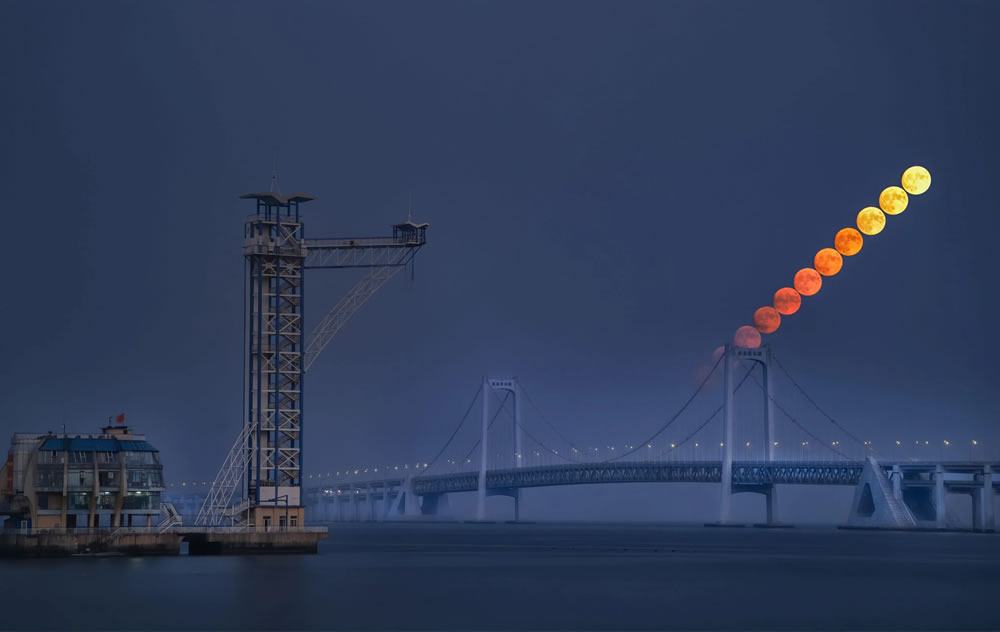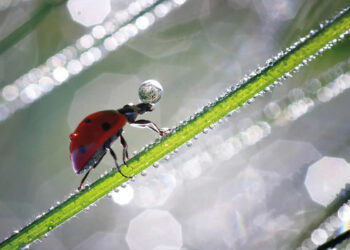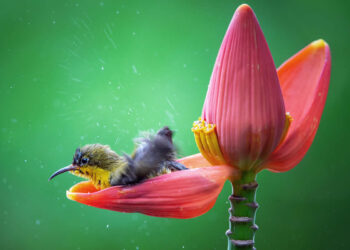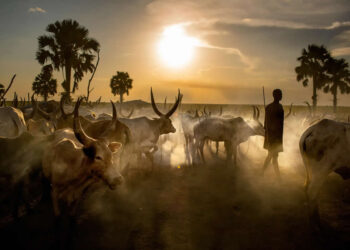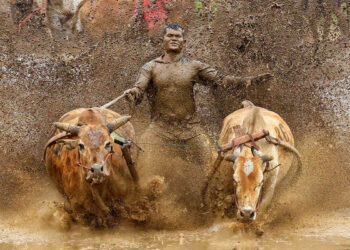Here are the outstanding winning photos of the Astronomy Photographer Of The Year 2023. The spellbinding winning images from the world’s biggest space photography competition were announced during an online awards ceremony on Thursday 14 September. As well as the overall winner, there were 11 different category prizes up for grabs, from glittering galaxies and shimmering aurora to out-of-this-world skyscapes. Find out more about all the entries below.
At the Royal Observatory Greenwich’s Astronomy Photographer of the Year awards this week, a remarkable and unexpected revelation from over 2.5 million light-years away stole the spotlight. A team of amateur astronomers, consisting of Marcel Drechsler, Xavier Strottner, and Yann Sainty, unveiled a breathtaking image featuring an immense plasma arc adjacent to the Andromeda Galaxy. This astonishing discovery has piqued the interest of scientists who are now delving deeper into the secrets concealed within this colossal gas cloud.
Judge and renowned astrophotographer, László Francsics, expressed, “This astronomical photograph is both awe-inspiring and invaluable. Not only does it offer a fresh perspective on Andromeda, but it also elevates the art of astrophotography to new heights.”
Scroll down and inspire yourself, Check their website for more information.
You can find more info about RMG:
#1 Galaxy – Overall winner: Andromeda, Unexpected By Marcel Drechsler, Xavier Strottner, and Yann Sainty
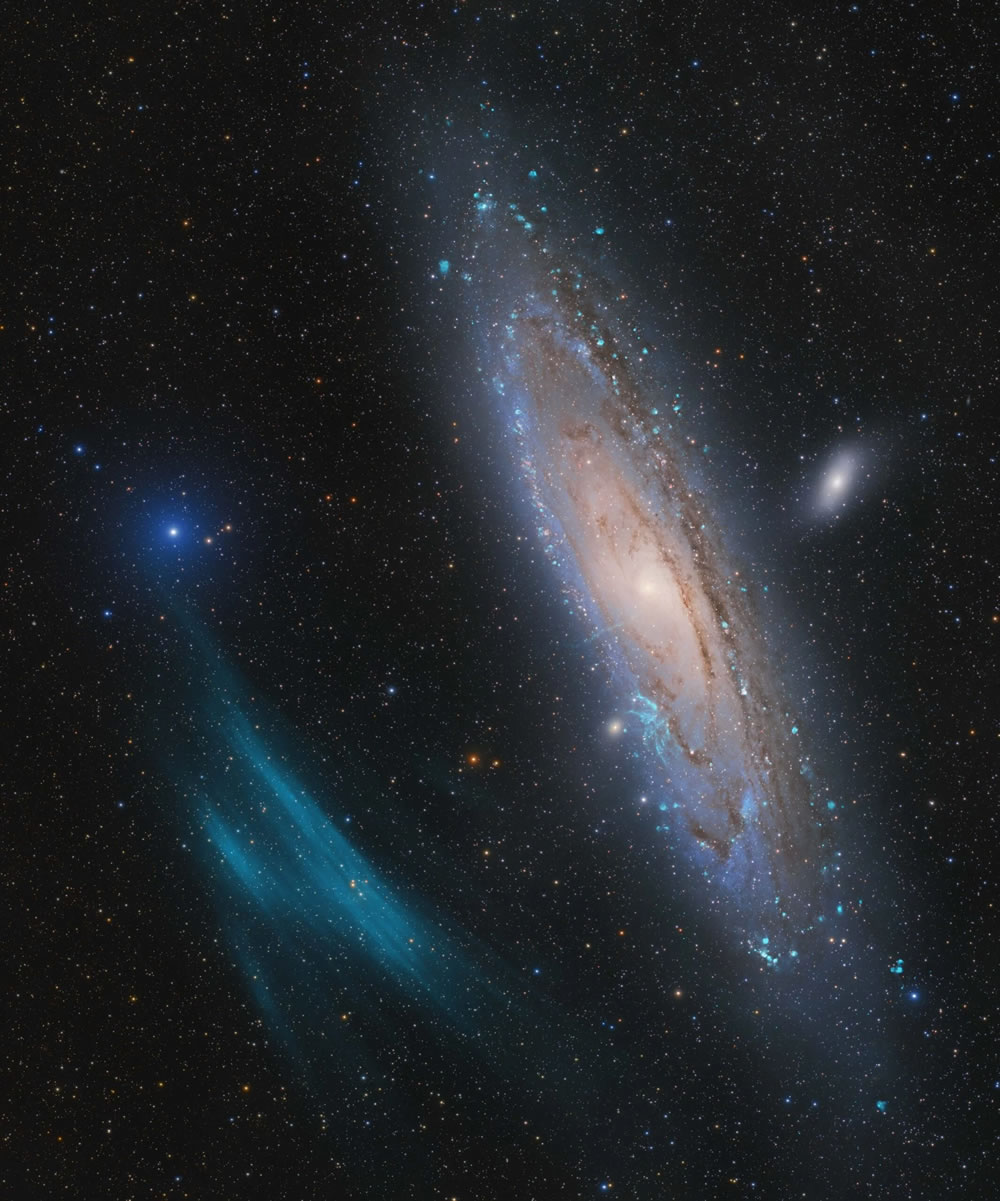
A team of amateur astronomers led by Marcel Drechsler, Xavier Strottner, and Yann Sainty made a surprising discovery−a huge plasma arc next to the Andromeda Galaxy. Scientists are now investigating the newly discovered giant in a transnational collaboration. It could be the largest such structure in the nearby environment in the Universe. The Andromeda Galaxy is the closest spiral galaxy to the Milky Way. It is undoubtedly one of the most photographed deep-sky objects ever. The new discovery of such a large structure in the immediate vicinity of the galaxy was all the more surprising.
#2 Galaxy – Runner-Up: The Eyes Galaxies By Weitang Liang
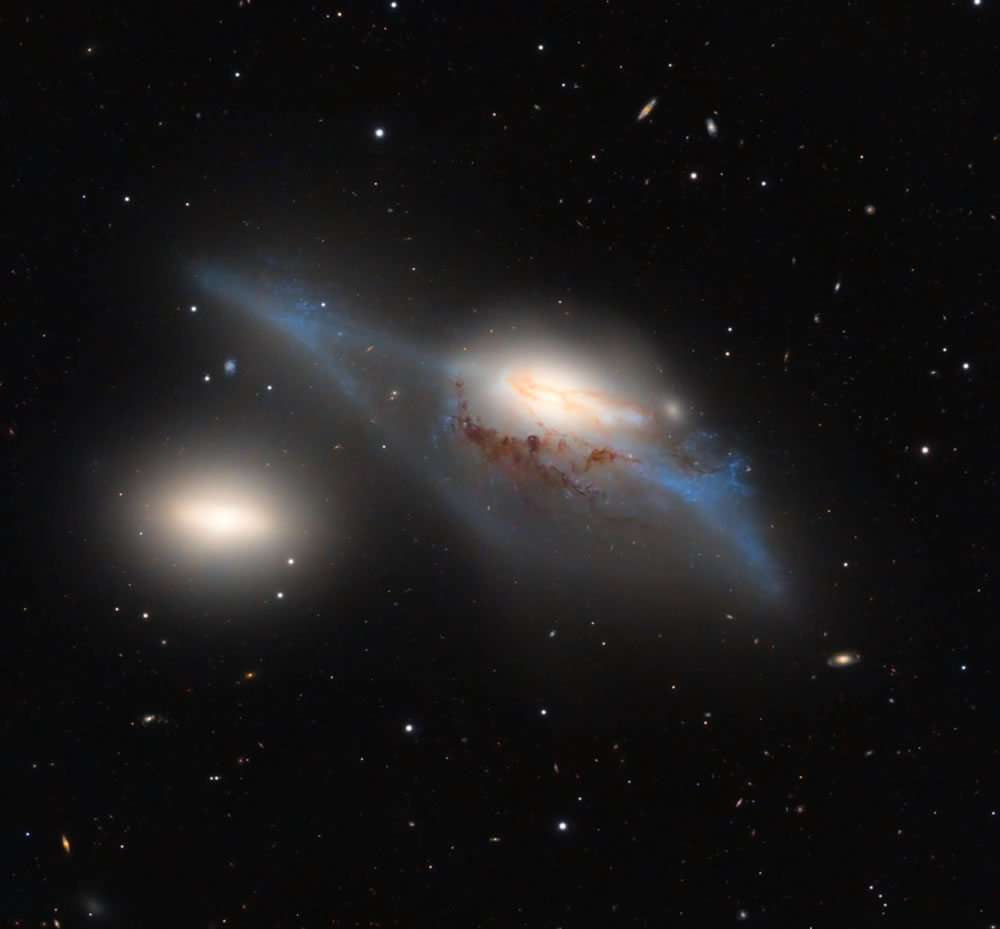
#3 Galaxy – Highly Commended: Neighbors By Paul Montague
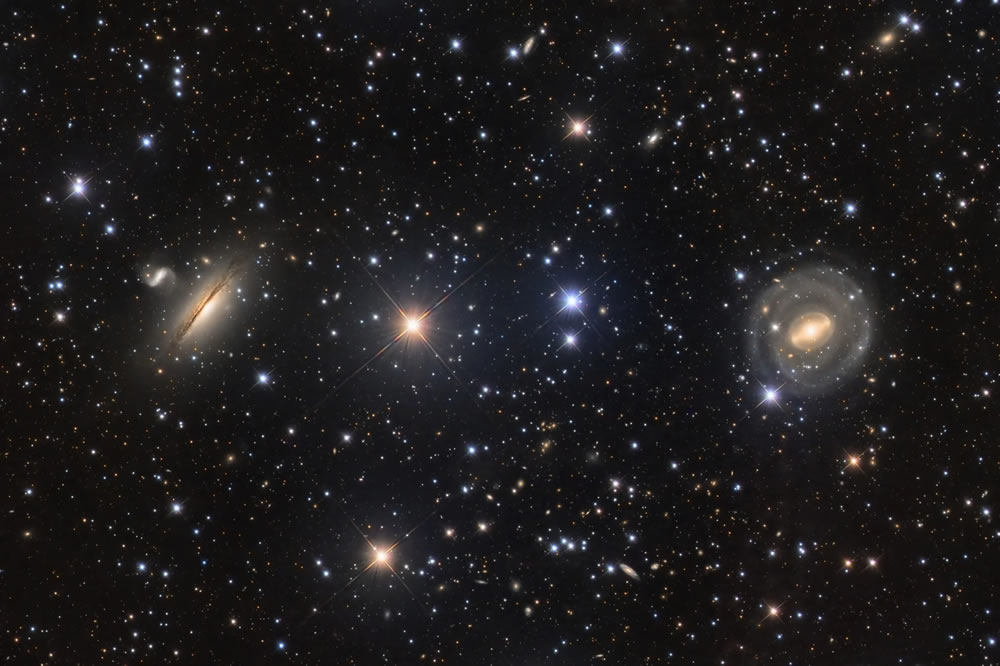
#4 Aurora – Winner: Brushstroke By Monika Deviat
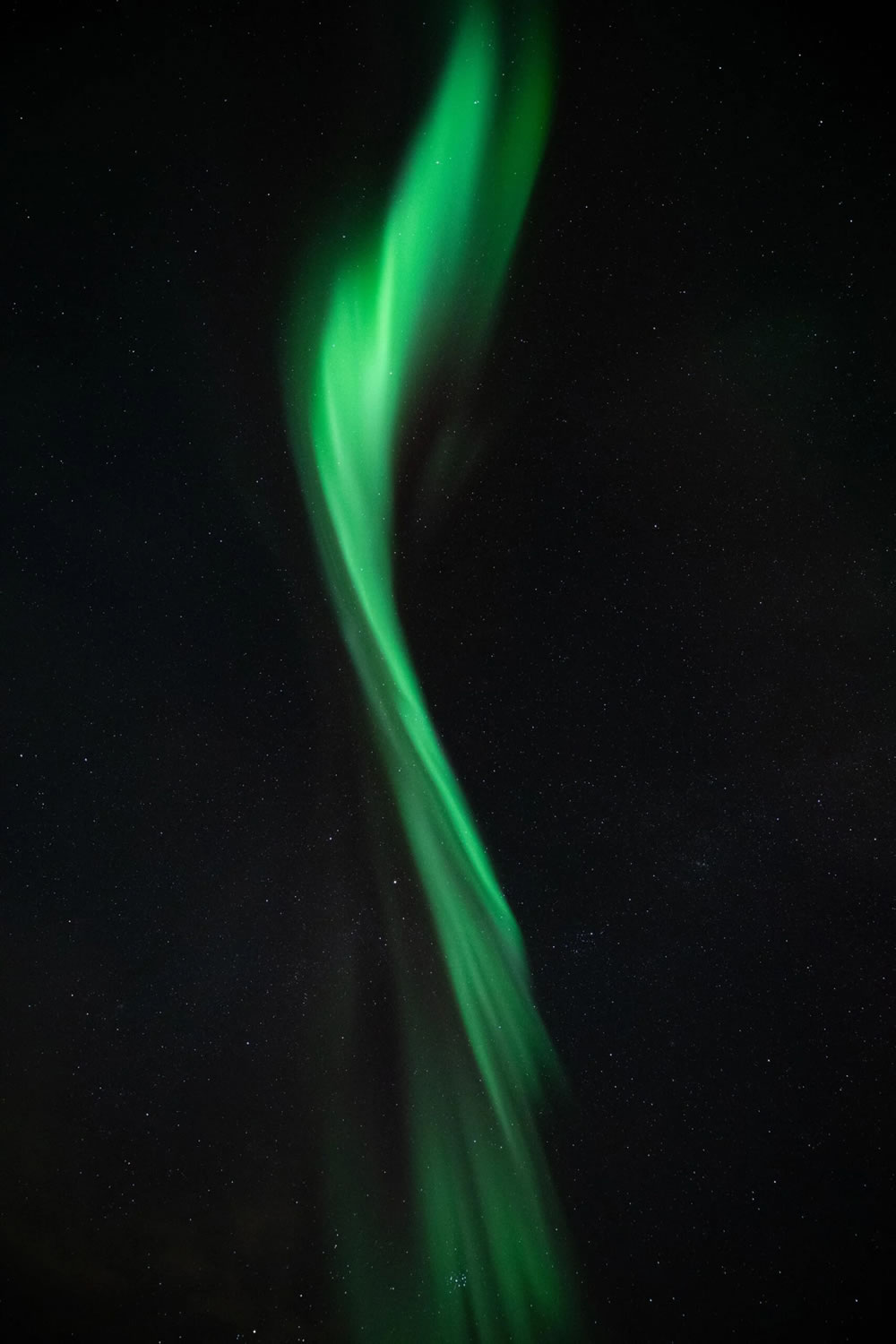
An abstract aurora in the shape of a brushstroke. Unusually, the photographer decided to photograph the aurora in isolation.
#5 Aurora – Runner-up: Circle of Light By Andreas Ettl
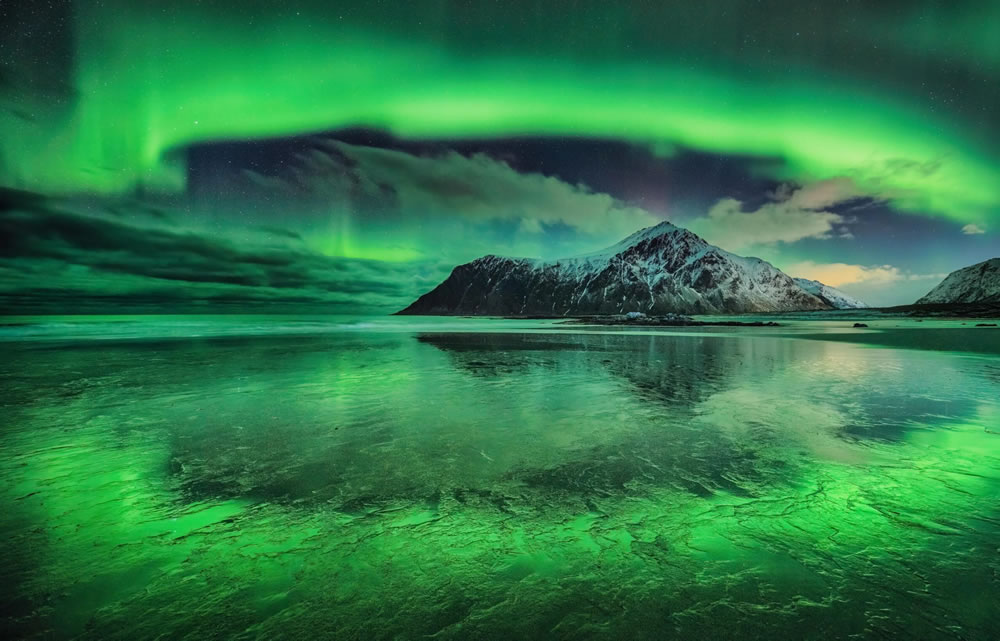
#6 Aurora – Highly Commended: Fire on the Horizon By Chester Hall-Fernandez
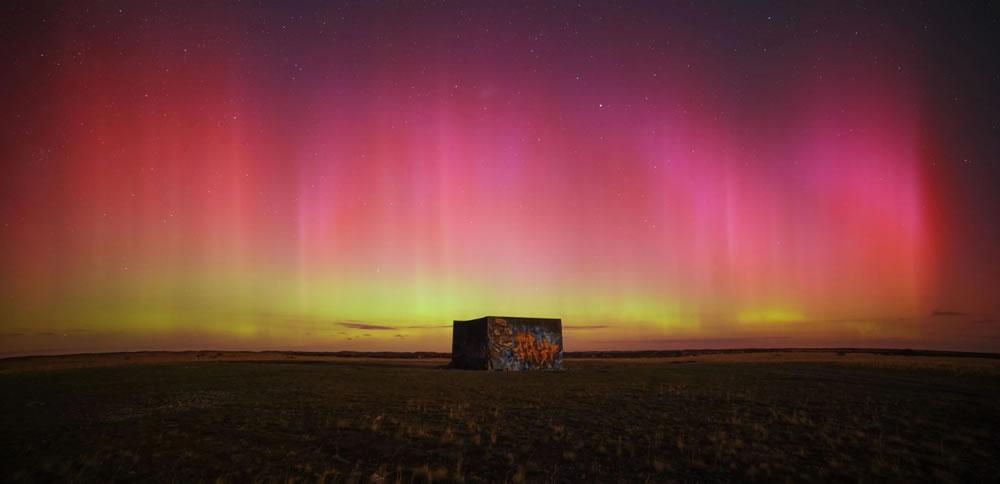
#7 Our Moon – Winner: Mars-Set By Ethan Chappel
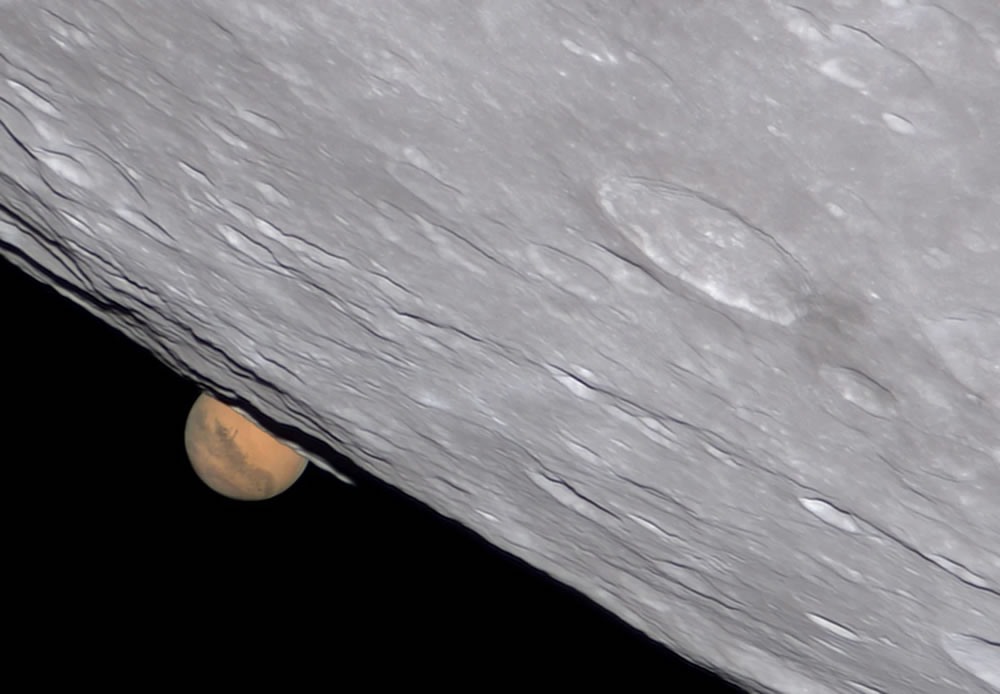
An occultation of Mars that took place on December 8, 2022. During the occultation, the moon passes in front of the planet Mars, allowing the astrophotographer to capture both objects together. The image shows Mars behind the moon’s southern side in impressive detail.
#8 Our Moon – Runner-Up: Sundown on the Terminator By Tom Williams
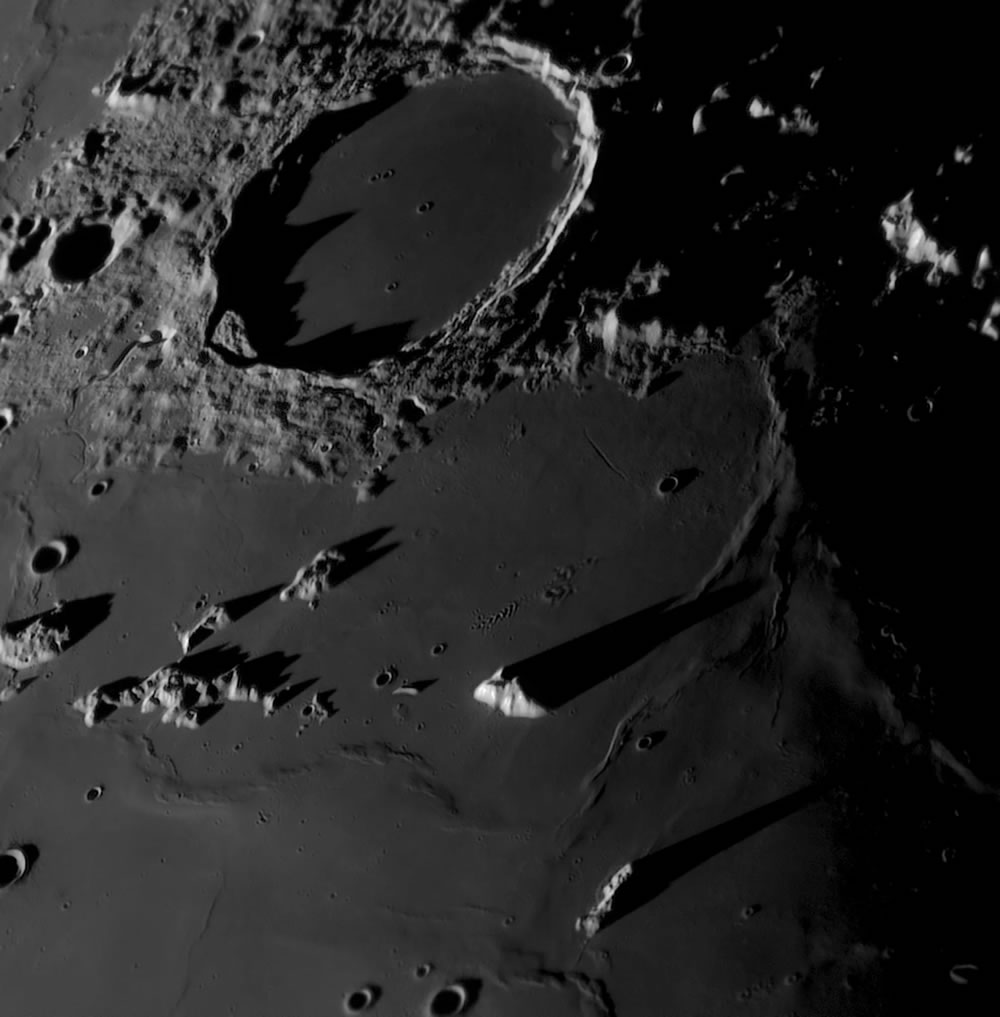
#9 Our Moon – Highly Commended: Last Full Moon of the Year Featuring a Colourful Corona During a Close Encounter with Mars By Miguel Claro
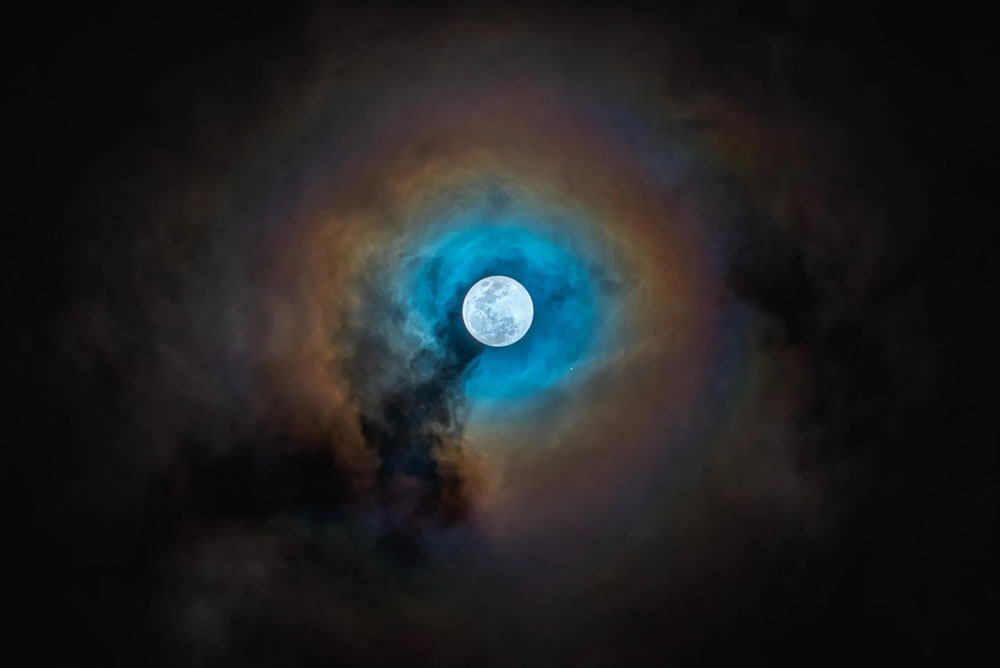
#10 Our Sun – Winner: A Sun Question By Eduardo Schaberger Poupeau
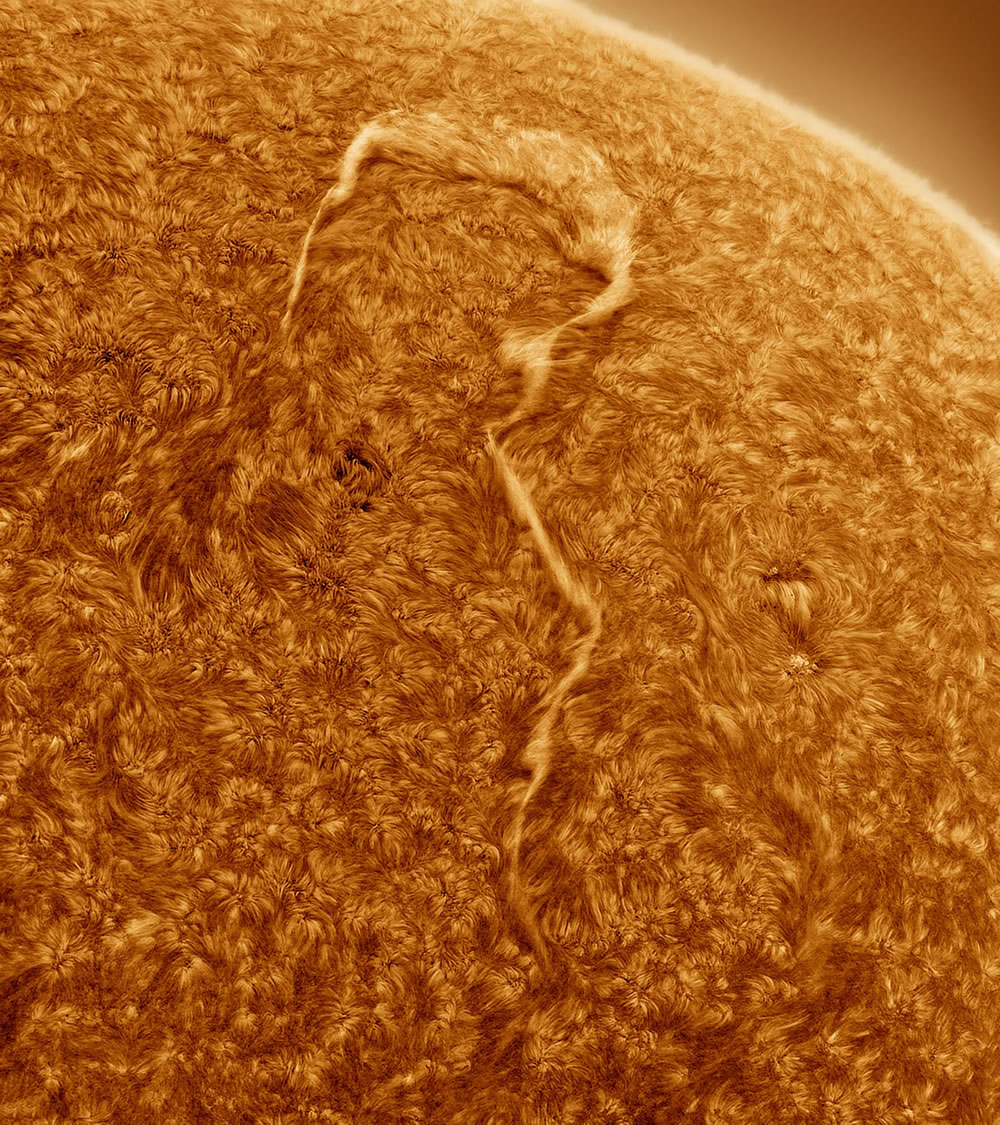
A photograph of the sun with a huge filament in the shape of a question mark. Solar filaments are arcs of plasma in the sun’s atmosphere given shape by magnetic fields. The photo is a mosaic of two panels.
#11 Our Sun – Runner-Up: Dark Star By Peter Ward
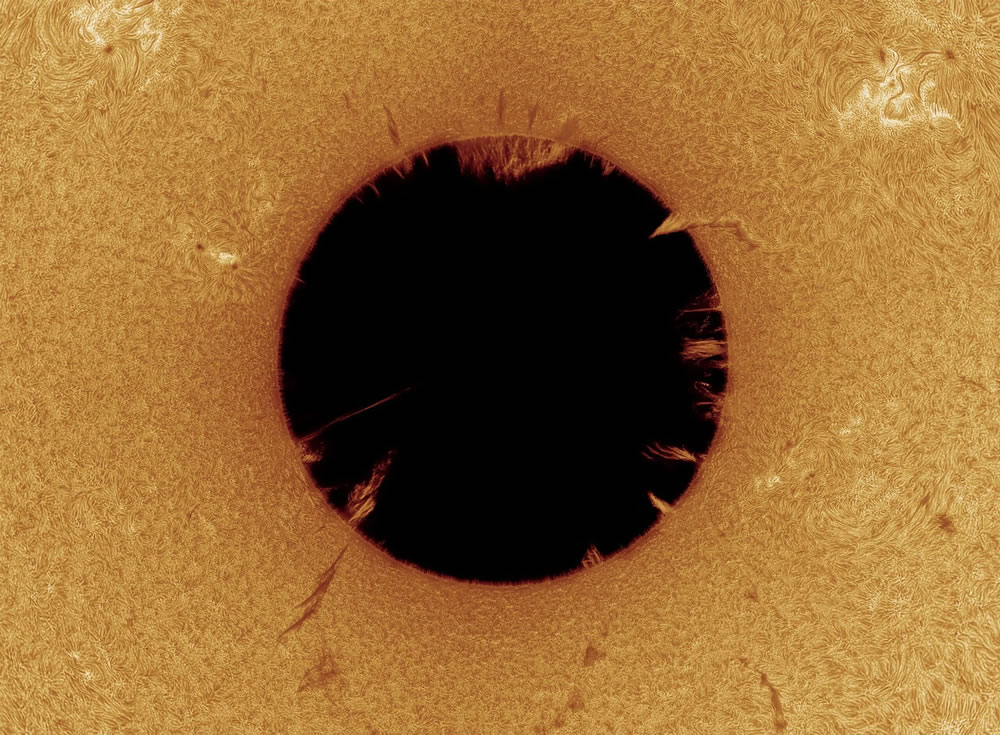
#12 Our Sun – Highly Commended: The Great Solar Flare By Mehmet Ergün
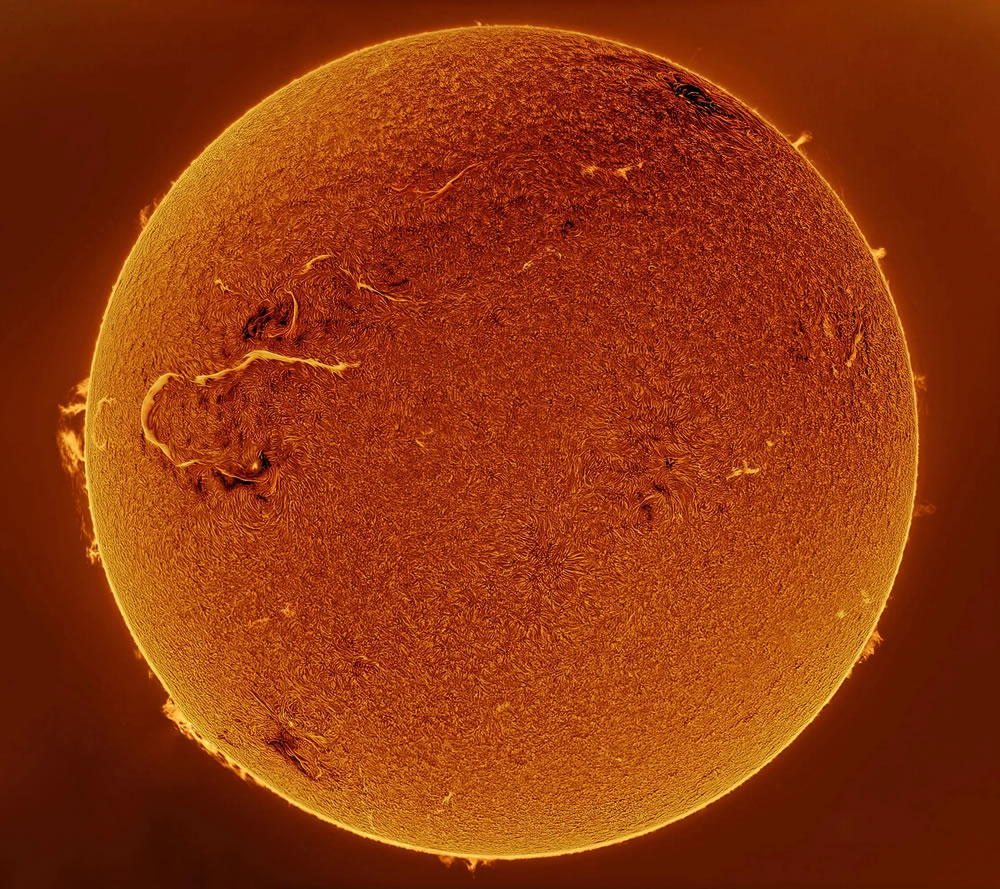
#13 People & Space – Winner: Zeila By Vikas Chander
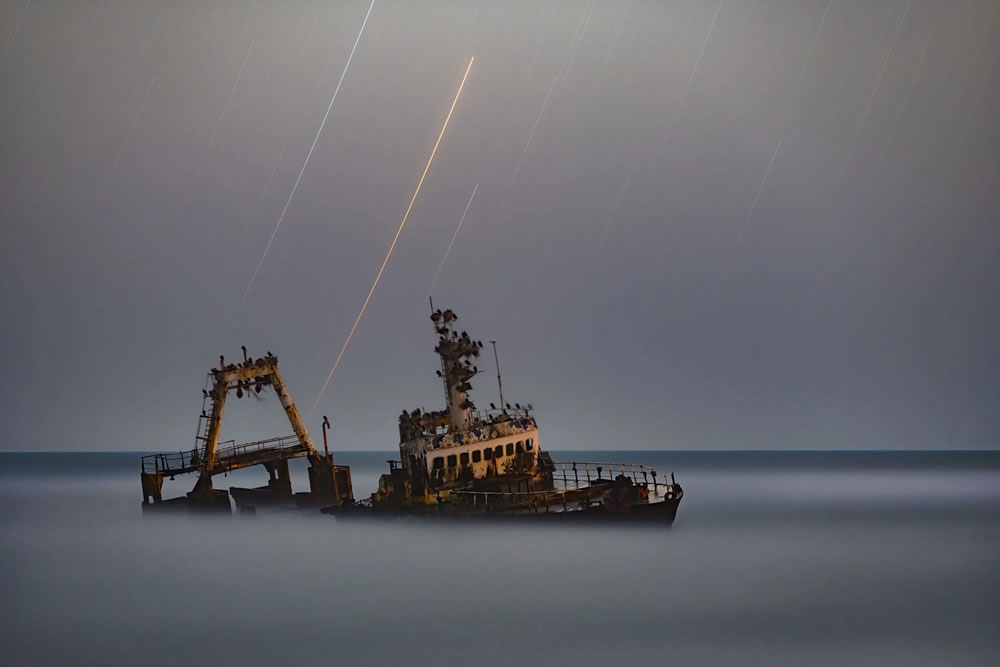
The most northerly part of Namibia’s Atlantic facing coast is one of the most treacherous coastlines in the world and has gained the name the Skeleton Coast. The ship in this photo, Zeila, was stranded on August 25, 2008 and is still in a well-preserved state. The image shows the delicate colors of different star types.
#14 People & Space – Runner-Up: A Visit to Tycho By Andrew McCarthy
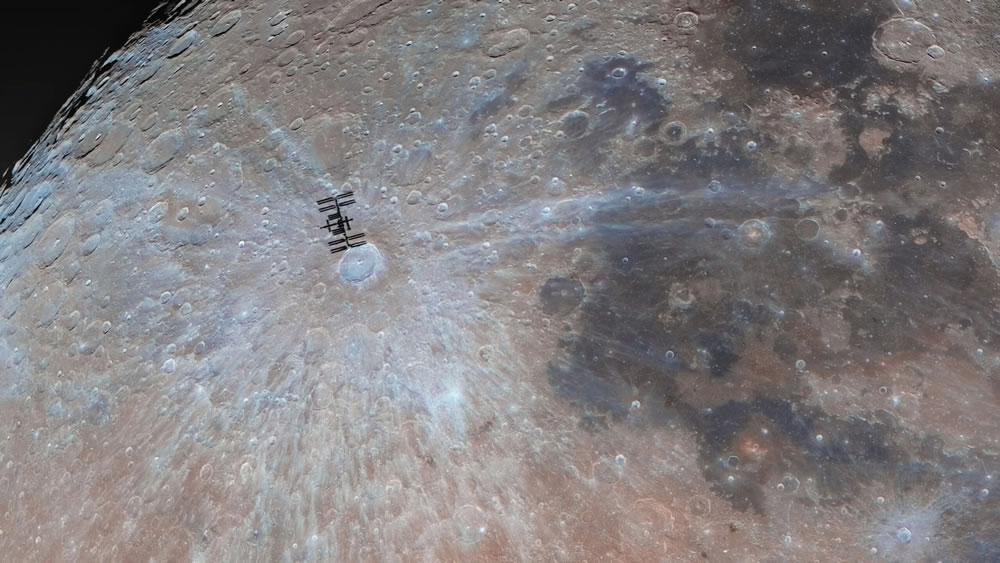
#15 People & Space – Highly Commended: Close Encounters of The Haslingden Kind By Katie McGuinness
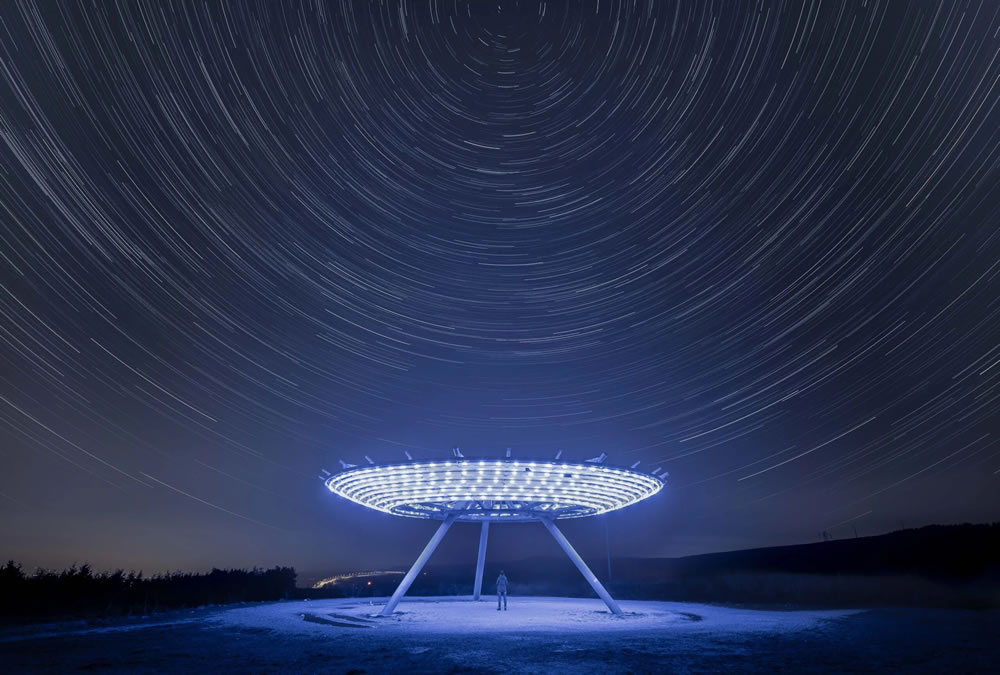
#16 Planets, Comets & Asteroids – Winner: Suspended in a Sunbeam By Tom Williams
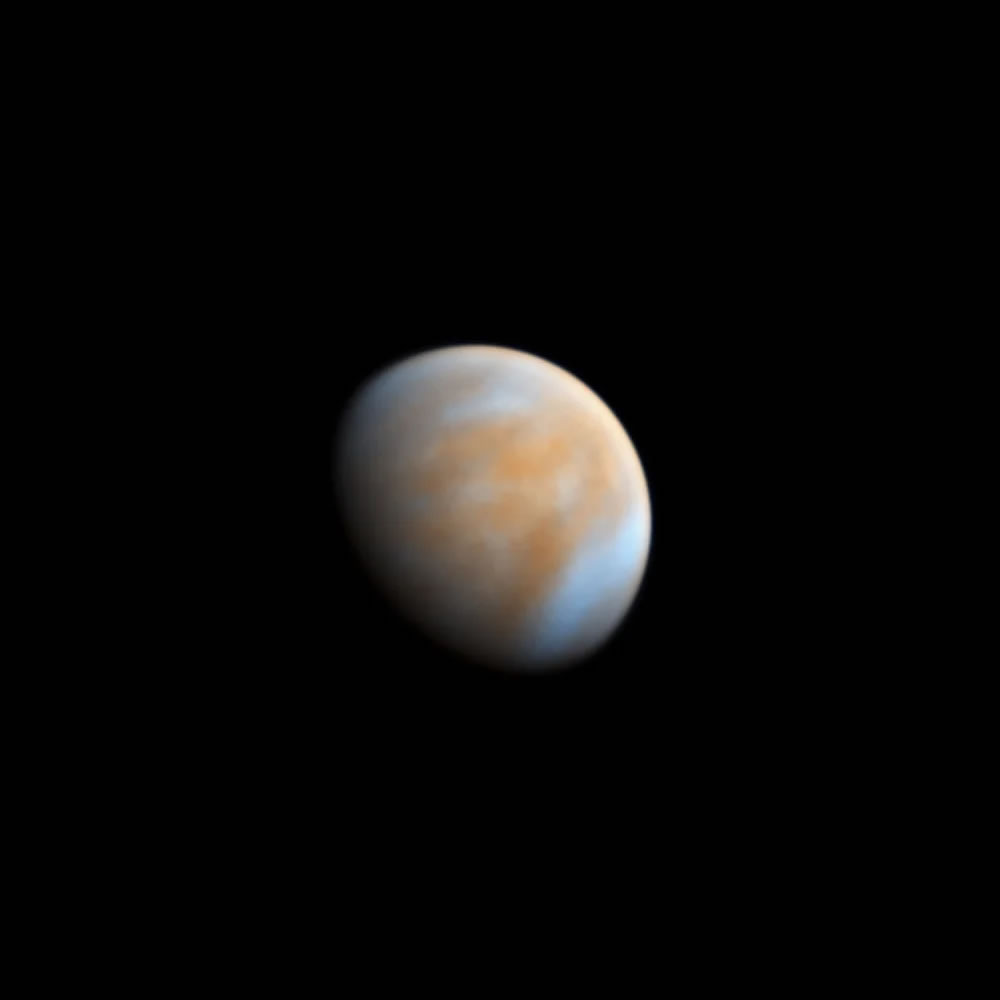
A unique view of Venus using infrared or ultraviolet false colour. By going beyond the visible part of the spectrum, a myriad of fine detail within the upper atmosphere of the planet is revealed.
#17 Planets, Comets & Asteroids – Runner-Up: Jupiter Close to Opposition By Marco Lorenzi
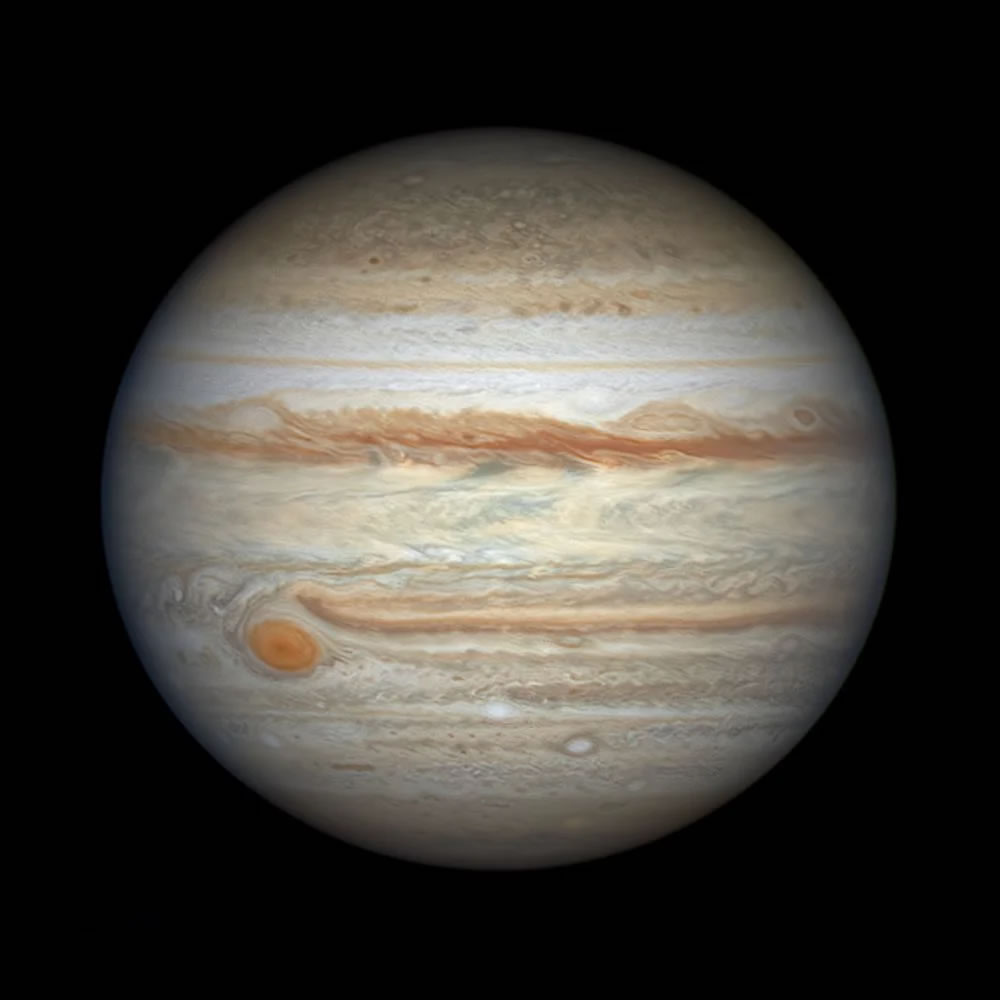
#18 Planets, Comets & Asteroids – Highly Commended: Uranus with Umbriel, Ariel, Miranda, Oberon and Titania By Martin Lewisv
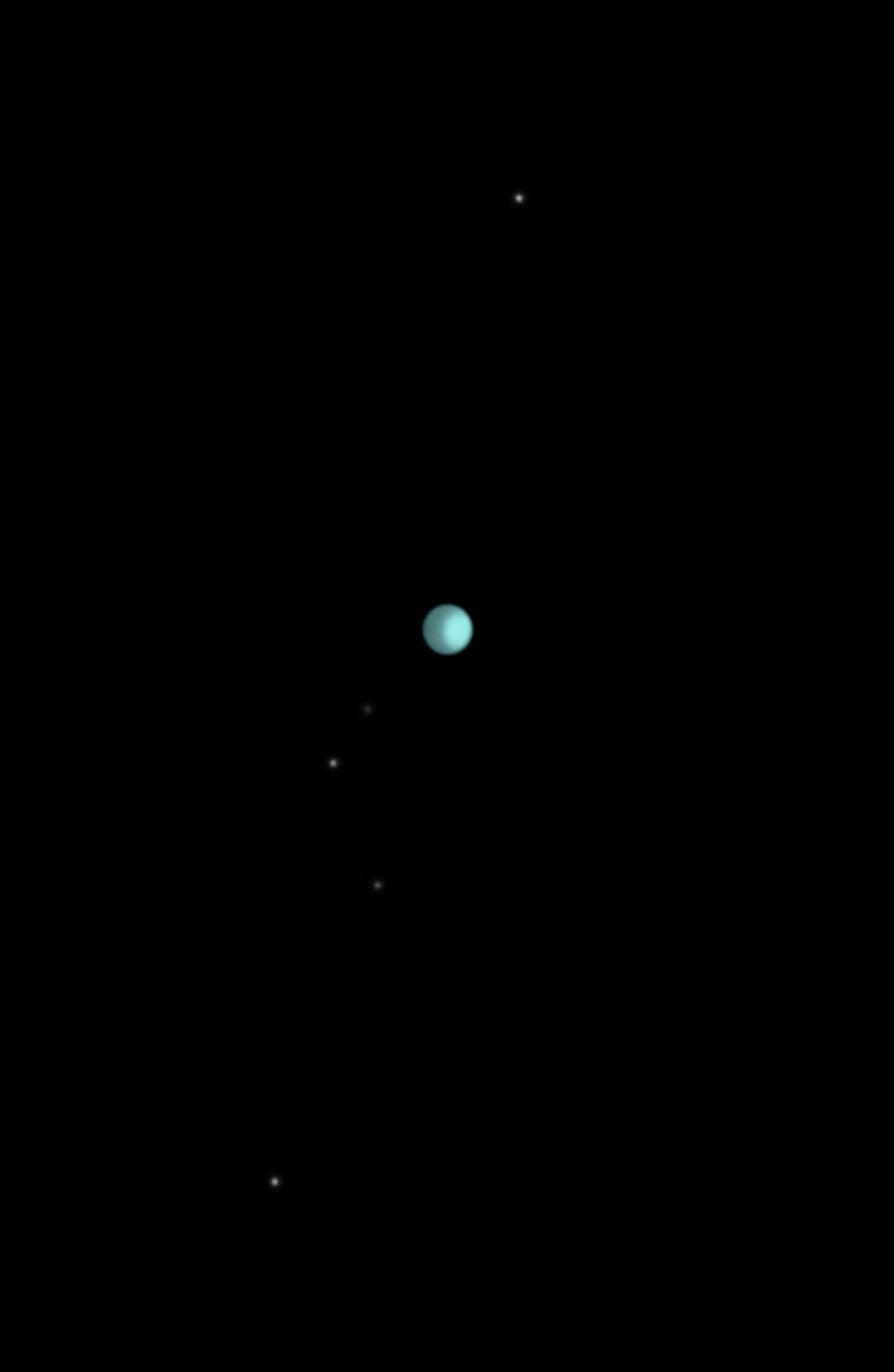
#19 Skyscapes – Winner: Grand Cosmic Fireworks By Angel An
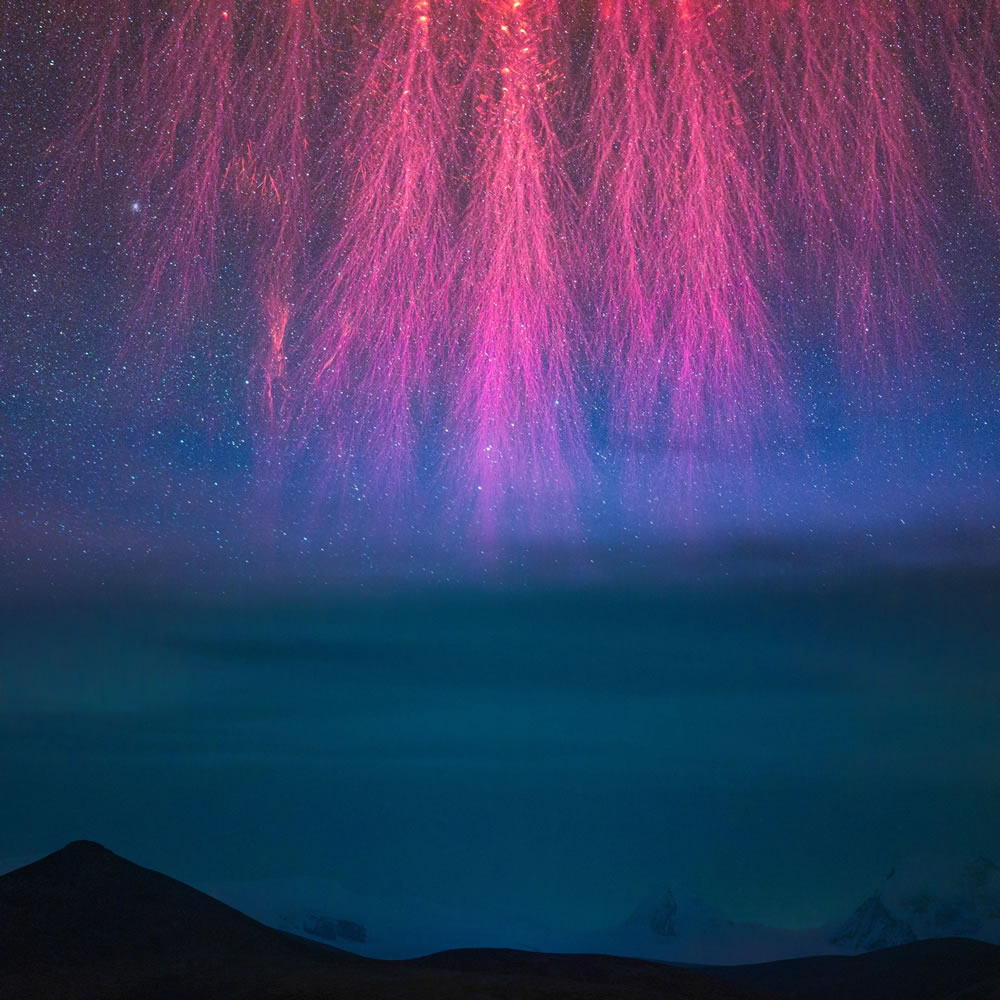
Sprites are an extremely rare phenomenon of atmospheric luminescence that appear like fireworks. An took this photograph from the highest ridge of the Himalaya mountains.
#20 Skyscapes – Runner-Up: Celestial Equator Above First World War Trench Memorial By Louis Leroux-Gere
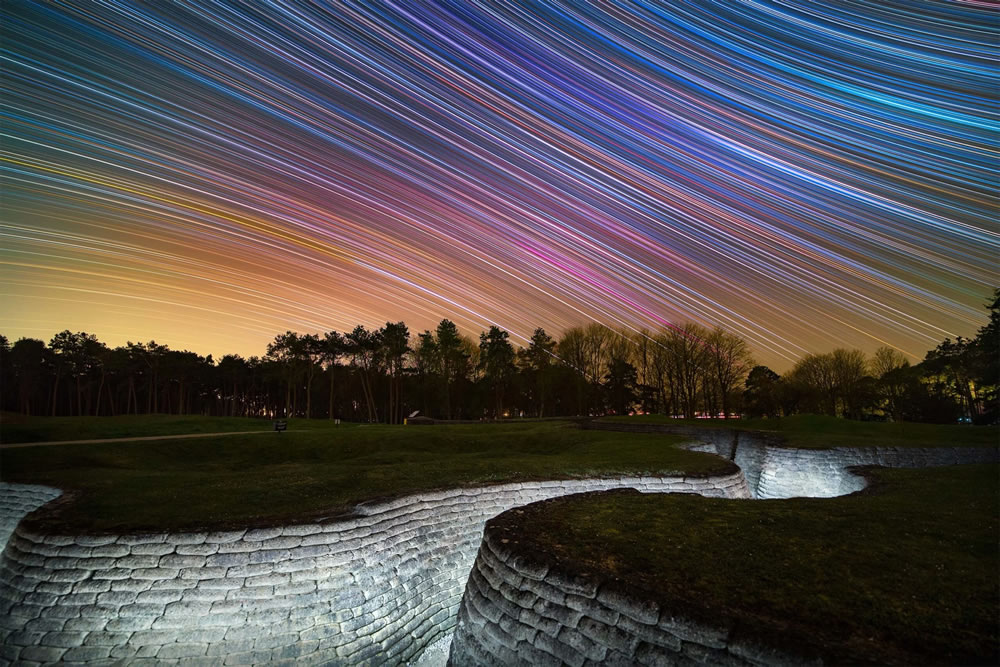
#21 Skyscapes – Highly Commended: Noctilucent Night By Peter Hoszang
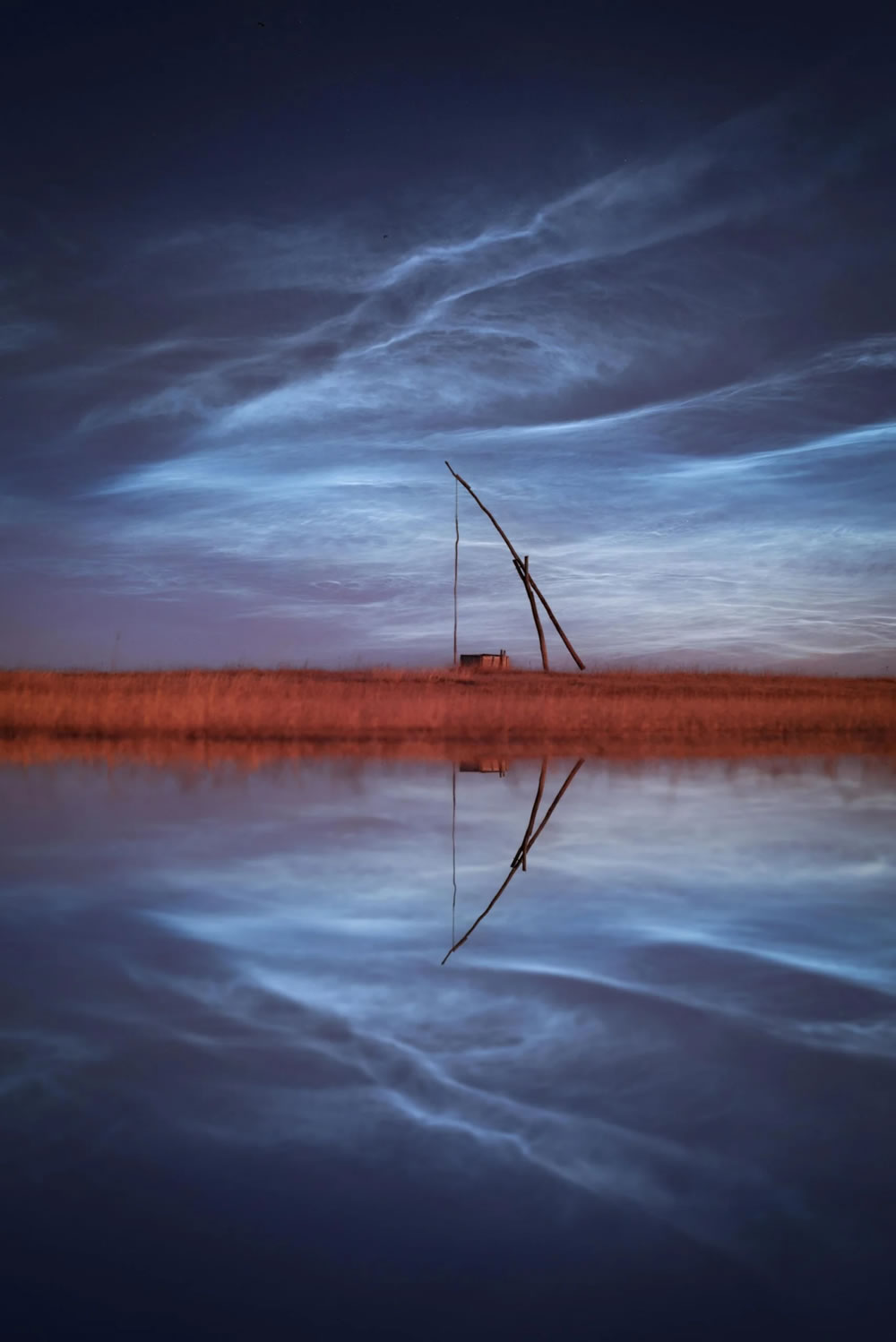
#22 Stars & Nebulae – Winner: New Class of Galactic Nebulae Around the Star YY Hya By Marcel Drechsler
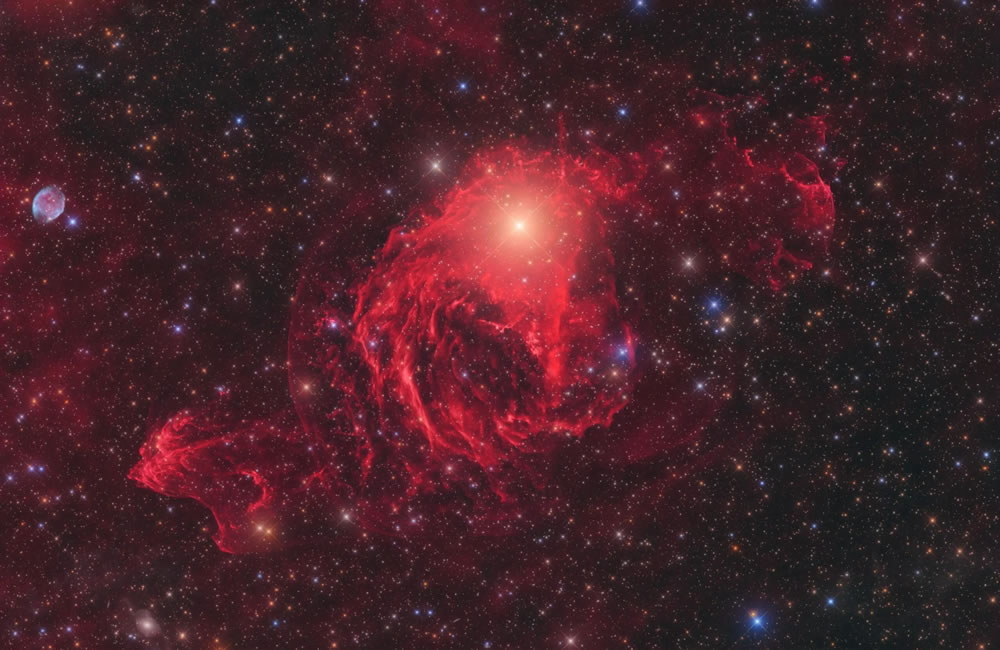
A team of amateur astronomers, led by Marcel Drechsler from Germany and Xavier Strottner from France, were able to make an important contribution to the study of the evolution of binary star systems: on old images of sky surveys, they discovered a previously unknown galactic nebula. At its center, a pair of stars surrounded by a common envelope was found. On more than 100 nights, more than 360 hours of exposure time were collected. The result shows an ultra-deep stellar remnant that the team has baptized “the heart of the Hydra.”
#23 Stars & Nebulae – Runner-Up: LDN 1448 et al. By Anthony Quintile
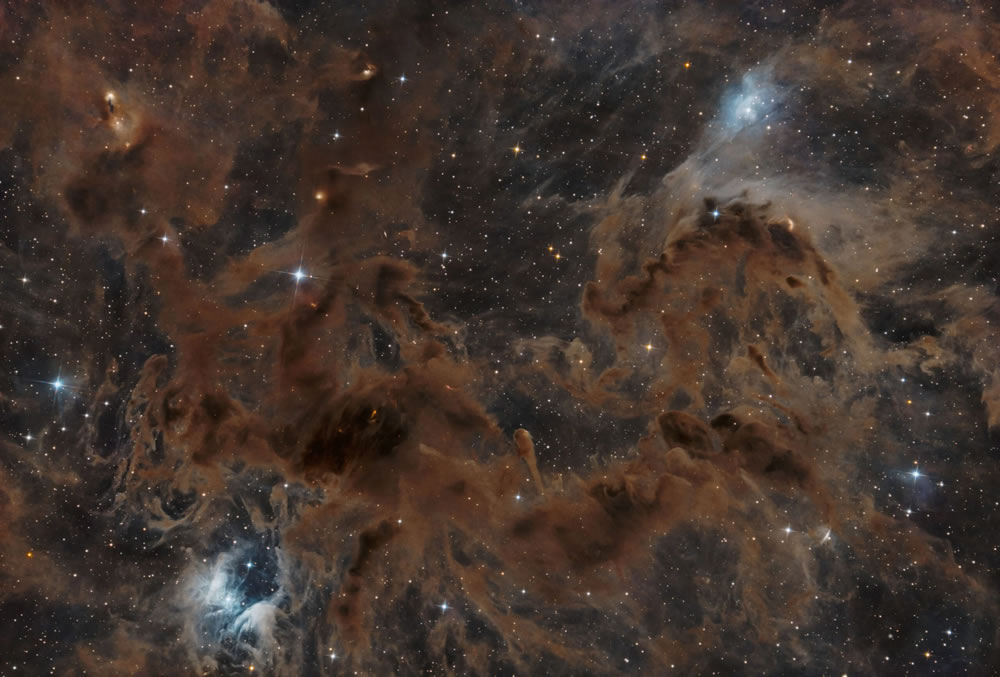
#24 Stars & Nebulae – Highly Commended: The Dark Wolf – Fenrir By James Baguley
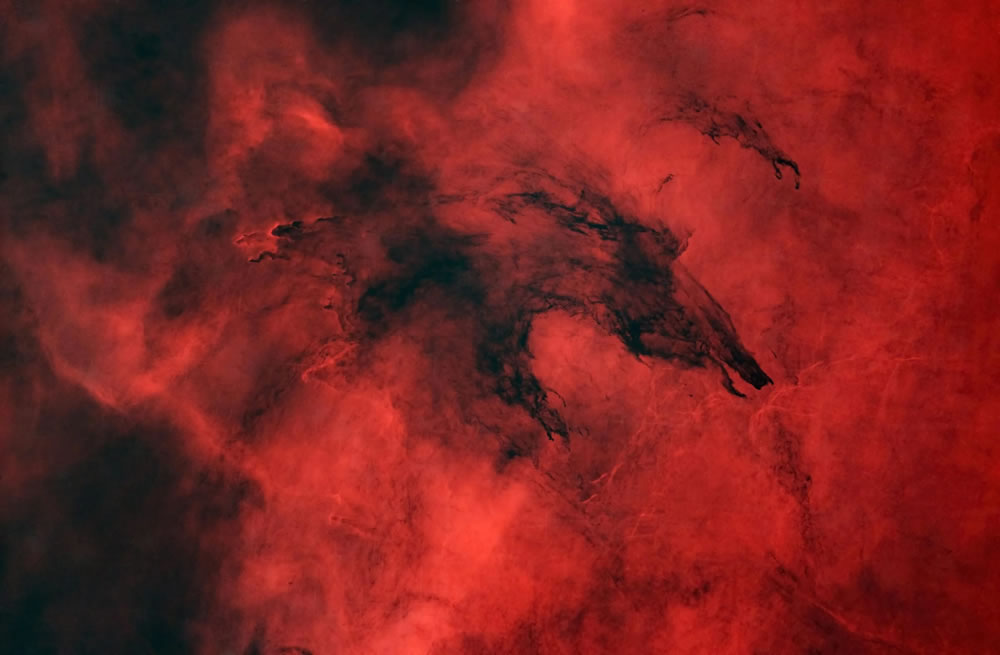
#25 The Sir Patrick Moore Prize for Best Newcomer – Winner: Sh2-132: Blinded by the Light By Aaron Wilhelm
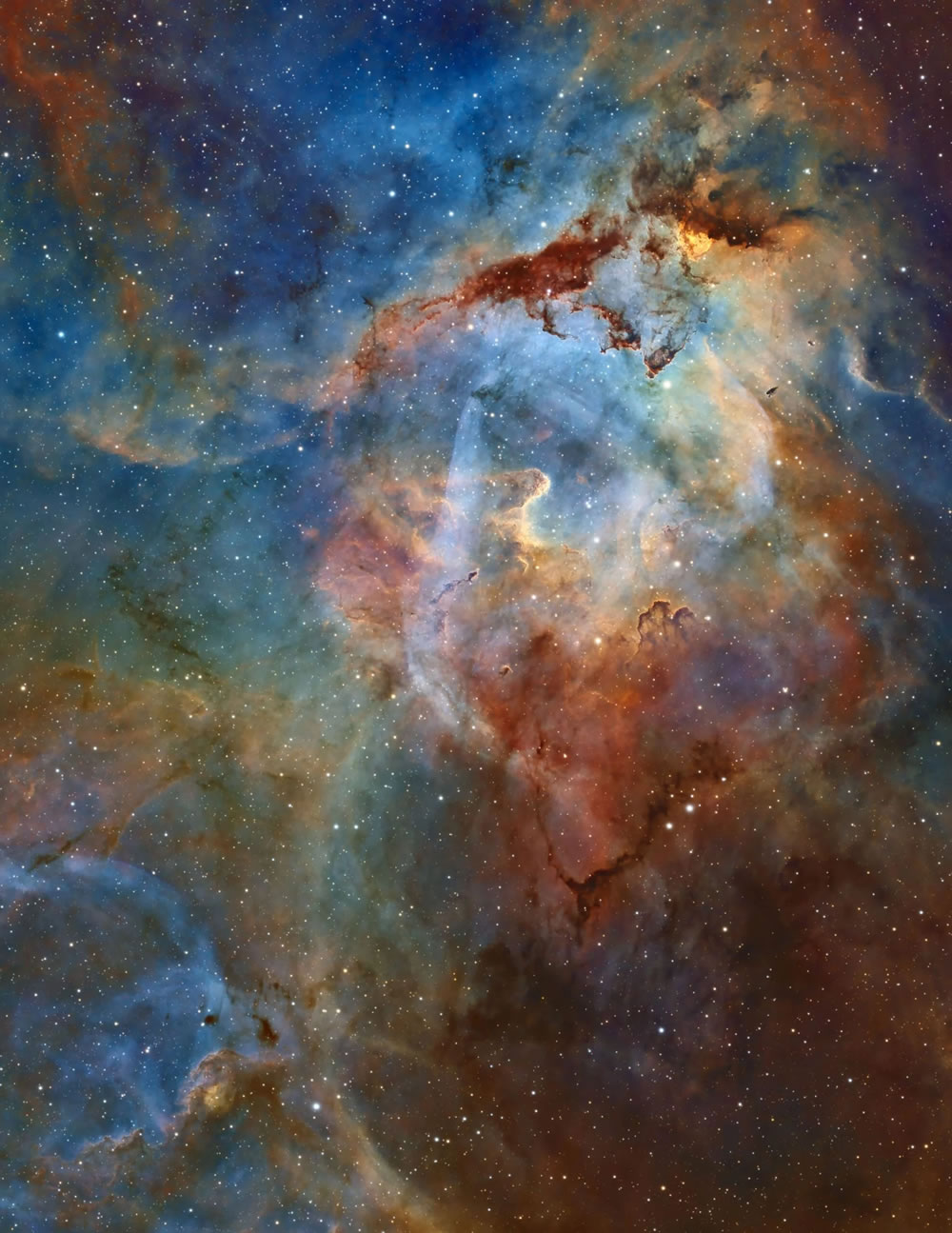
The Sh2-132 complex lies near the border of the Cepheus and Lacerta constellations and contains multiple deep sky structures. The photograph includes 70 hours of data, the rich interplay of all the gasses reveals something different each time you look at it.
#26 Young Astronomy Photographer of the Year – Winner: The Running Chicken Nebula By Runwei Xu and Binyu Wang
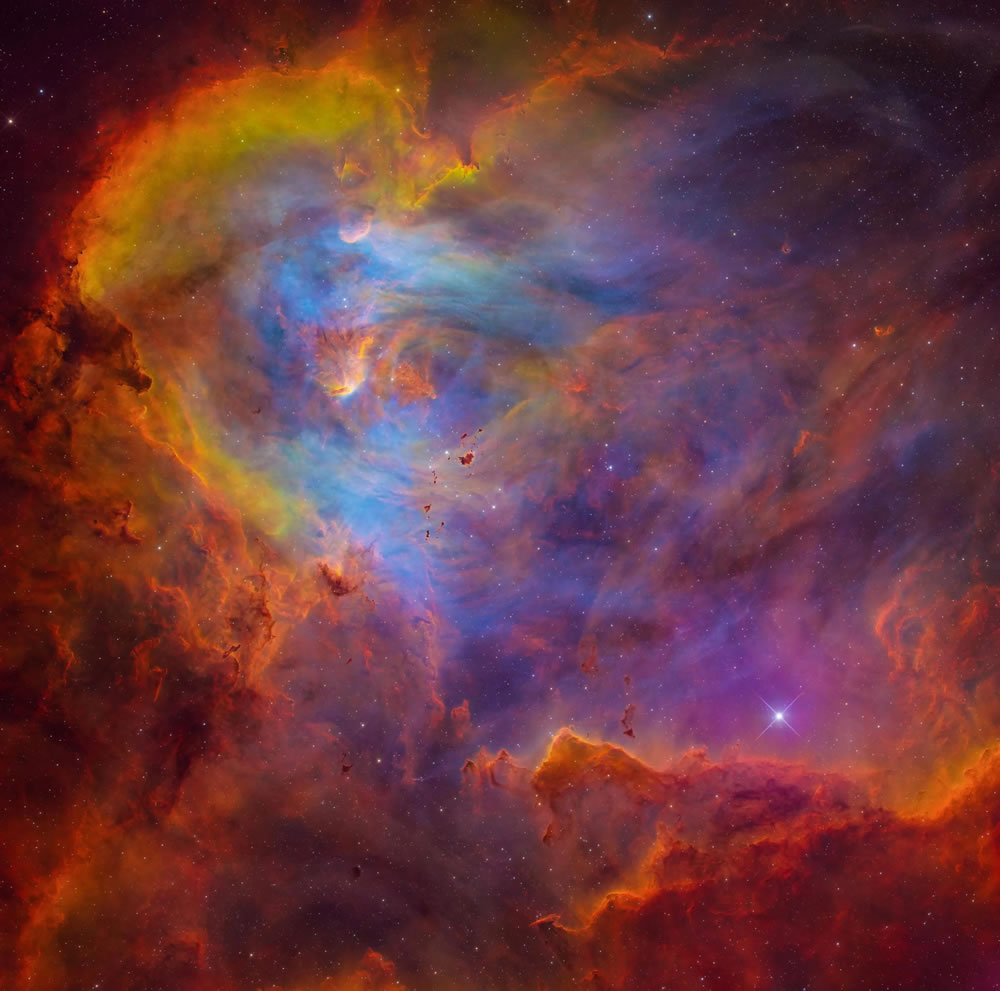
The Running Chicken Nebula, IC2944, is located in the constellation of Centaurus, 6,000 light years away from the Earth. Embedded in the nebula’s glowing gas the star cluster Collinder 249 is visible.
#27 Young Astronomy Photographer of the Year – Runner-Up: Blue Spirit Drifting in the Clouds By Haocheng Li and Runwei Xu
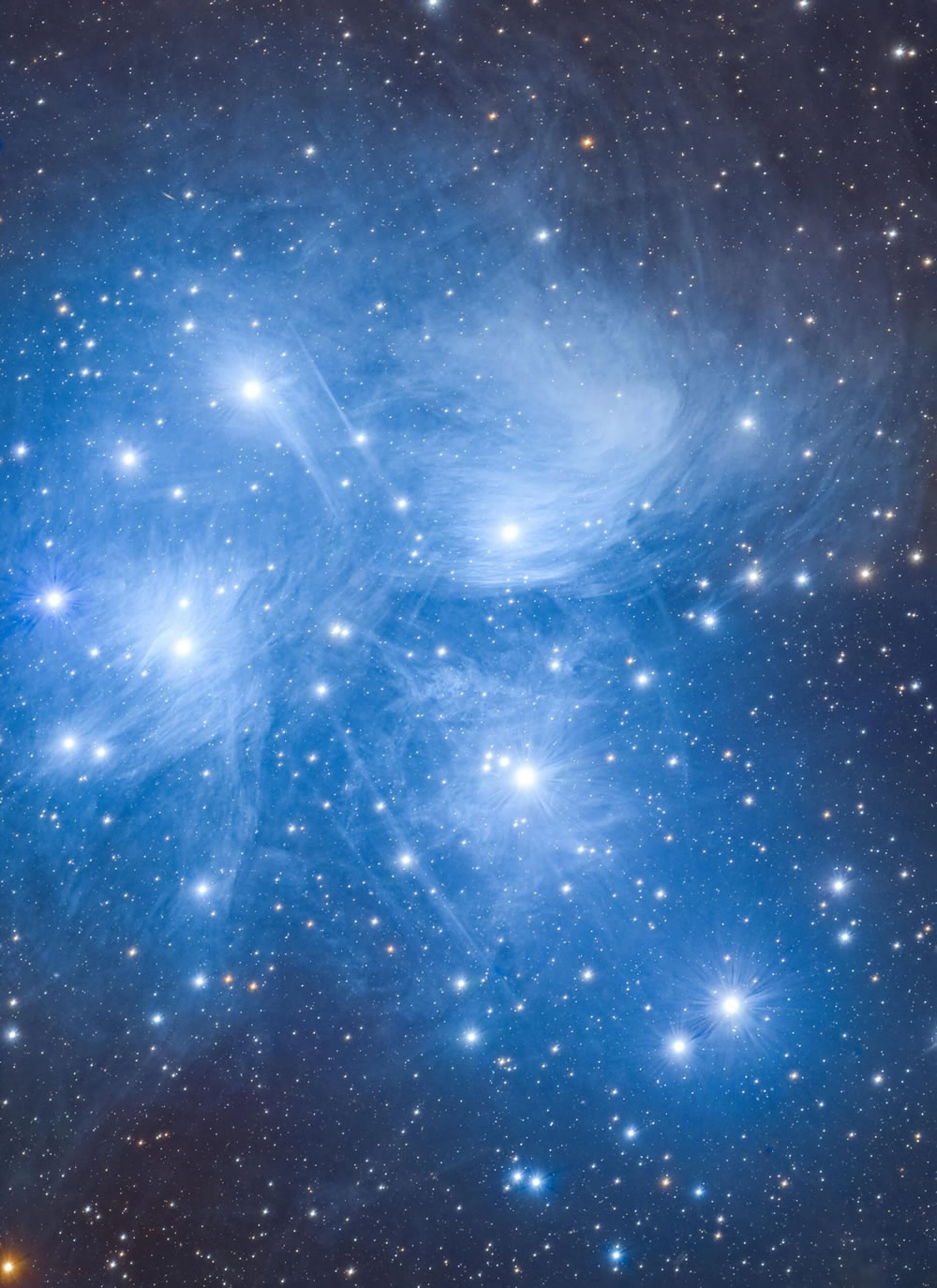
#28 Young Astronomy Photographer of the Year – Highly Commended: Lunar Occultation of Mars By Joshua Harwood-White
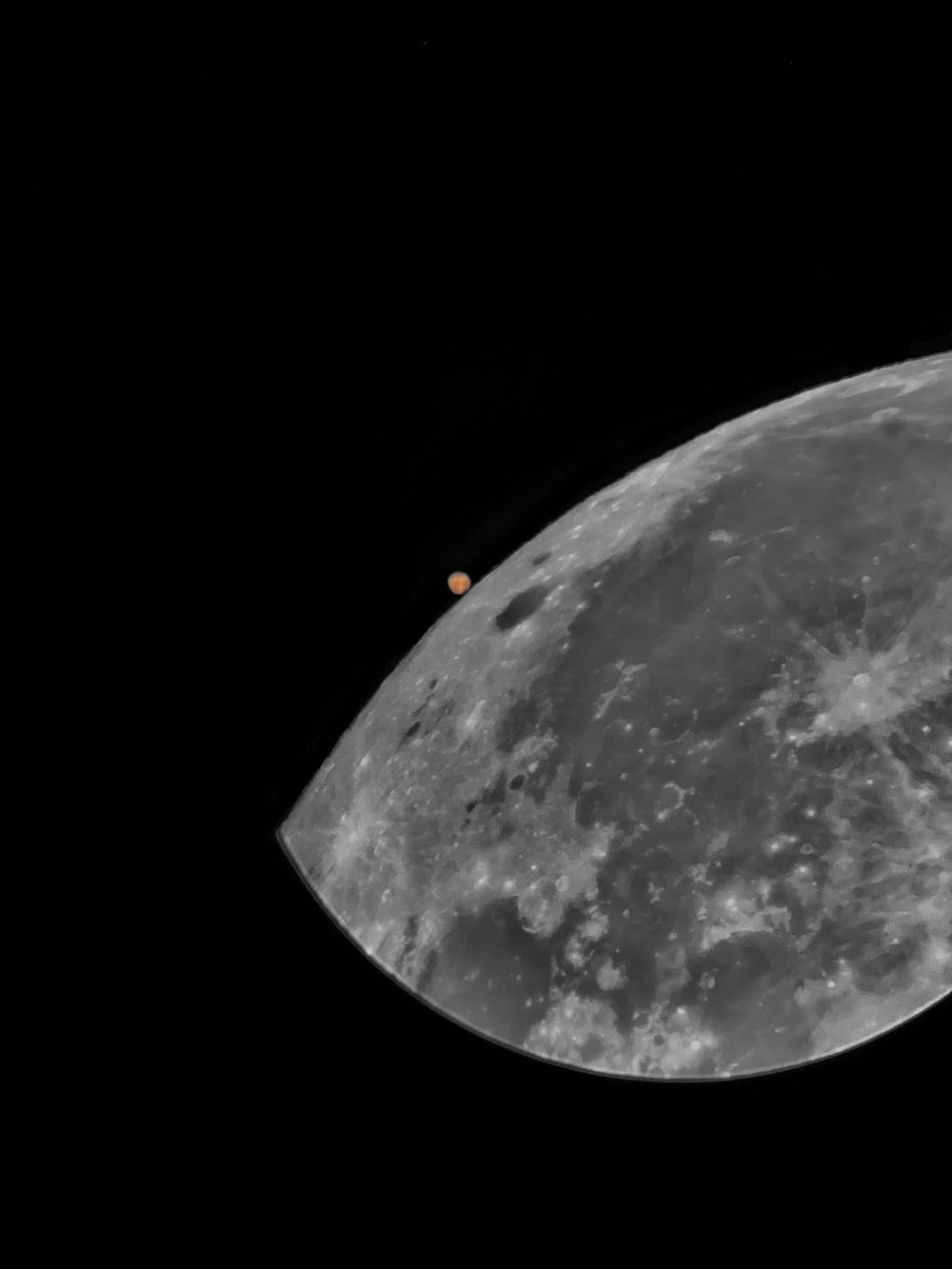
#29 Young Astronomy Photographer of the Year – Highly Commended: Roses Blooming in the Dark: NGC 2337 By Yanhao Mo
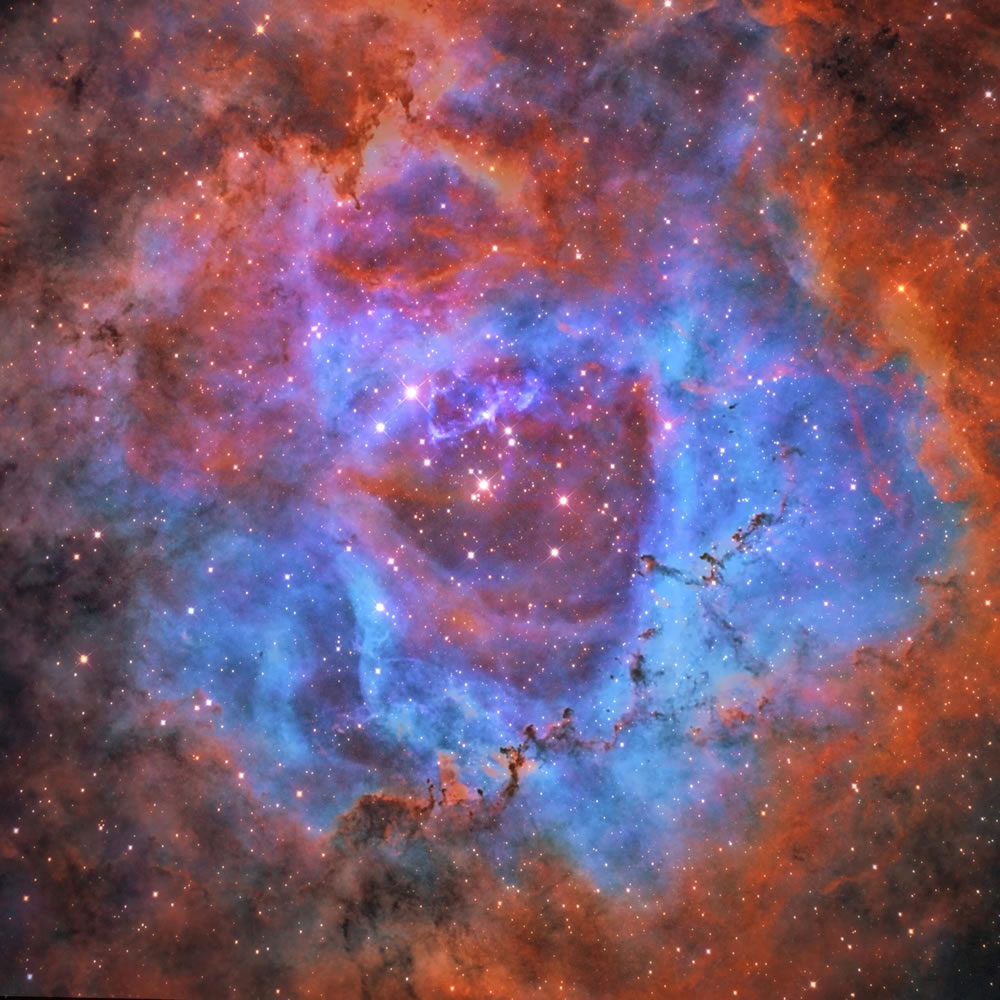
#30 Young Astronomy Photographer of the Year – Highly Commended: Moon at Nightfall By Haohan Sun
